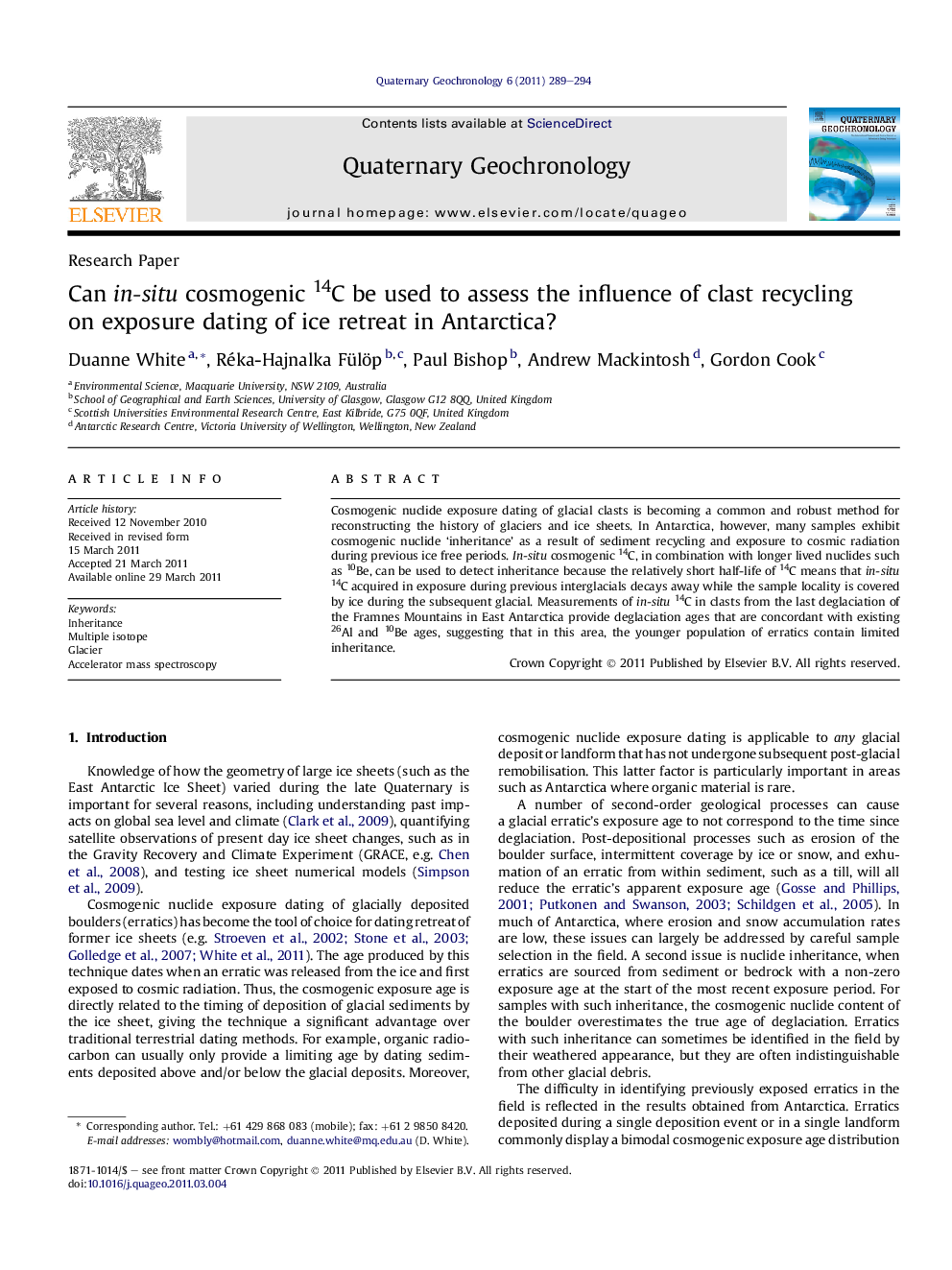| کد مقاله | کد نشریه | سال انتشار | مقاله انگلیسی | نسخه تمام متن |
|---|---|---|---|---|
| 4725322 | 1639870 | 2011 | 6 صفحه PDF | دانلود رایگان |

Cosmogenic nuclide exposure dating of glacial clasts is becoming a common and robust method for reconstructing the history of glaciers and ice sheets. In Antarctica, however, many samples exhibit cosmogenic nuclide ‘inheritance’ as a result of sediment recycling and exposure to cosmic radiation during previous ice free periods. In-situ cosmogenic 14C, in combination with longer lived nuclides such as 10Be, can be used to detect inheritance because the relatively short half-life of 14C means that in-situ14C acquired in exposure during previous interglacials decays away while the sample locality is covered by ice during the subsequent glacial. Measurements of in-situ14C in clasts from the last deglaciation of the Framnes Mountains in East Antarctica provide deglaciation ages that are concordant with existing 26Al and 10Be ages, suggesting that in this area, the younger population of erratics contain limited inheritance.
► We measure in-situ 14C in three Antarctic glacial erratics.
► We find little evidence for inheritance of 10Be and 26Al in some erratics.
► We test the sensitivity of the 14C/10Be ratio to burial–exhumation cycles.
► We conclude that nuclide production rate uncertainties hinder inheritance detection.
Journal: Quaternary Geochronology - Volume 6, Issues 3–4, June–August 2011, Pages 289–294